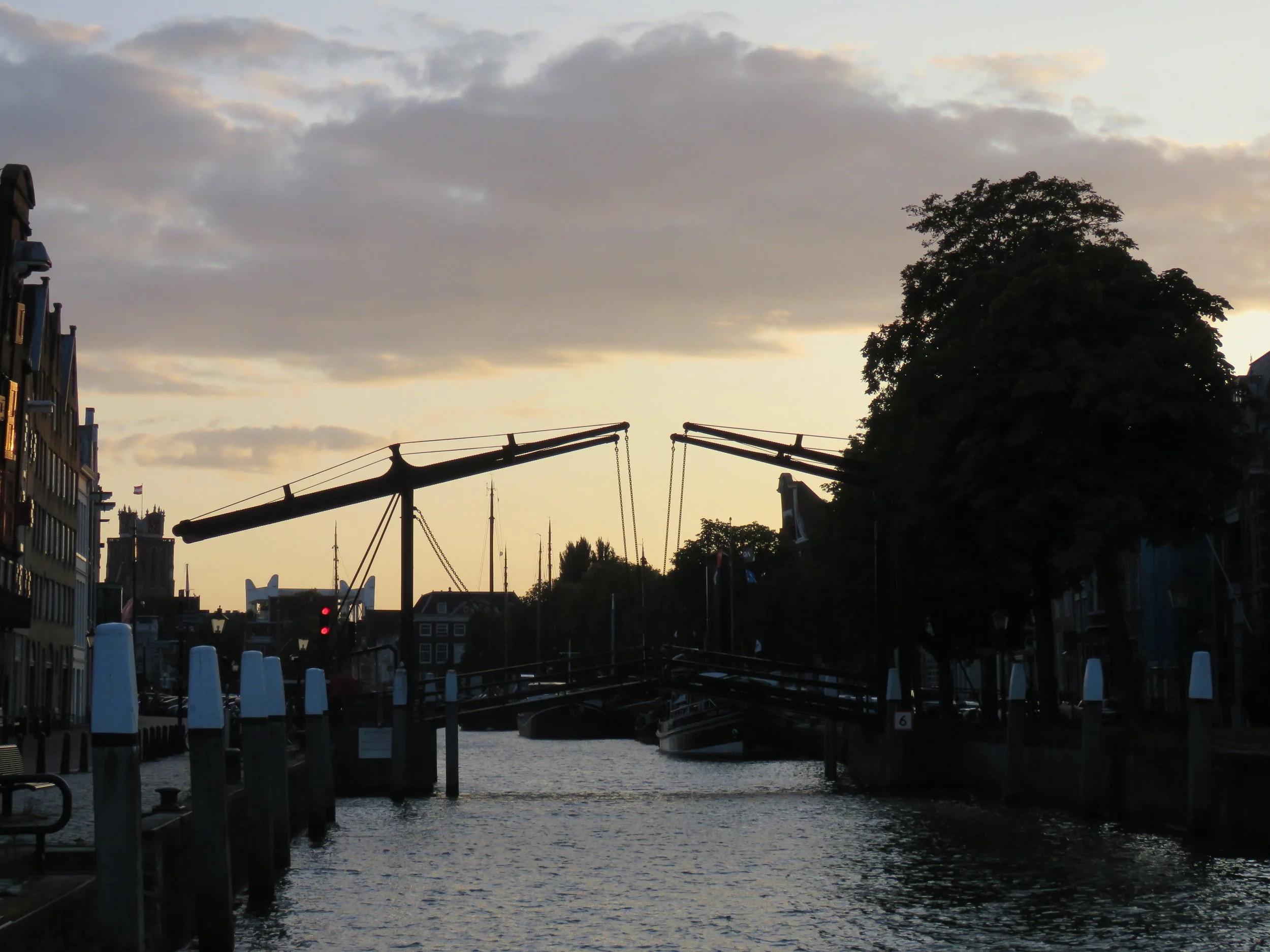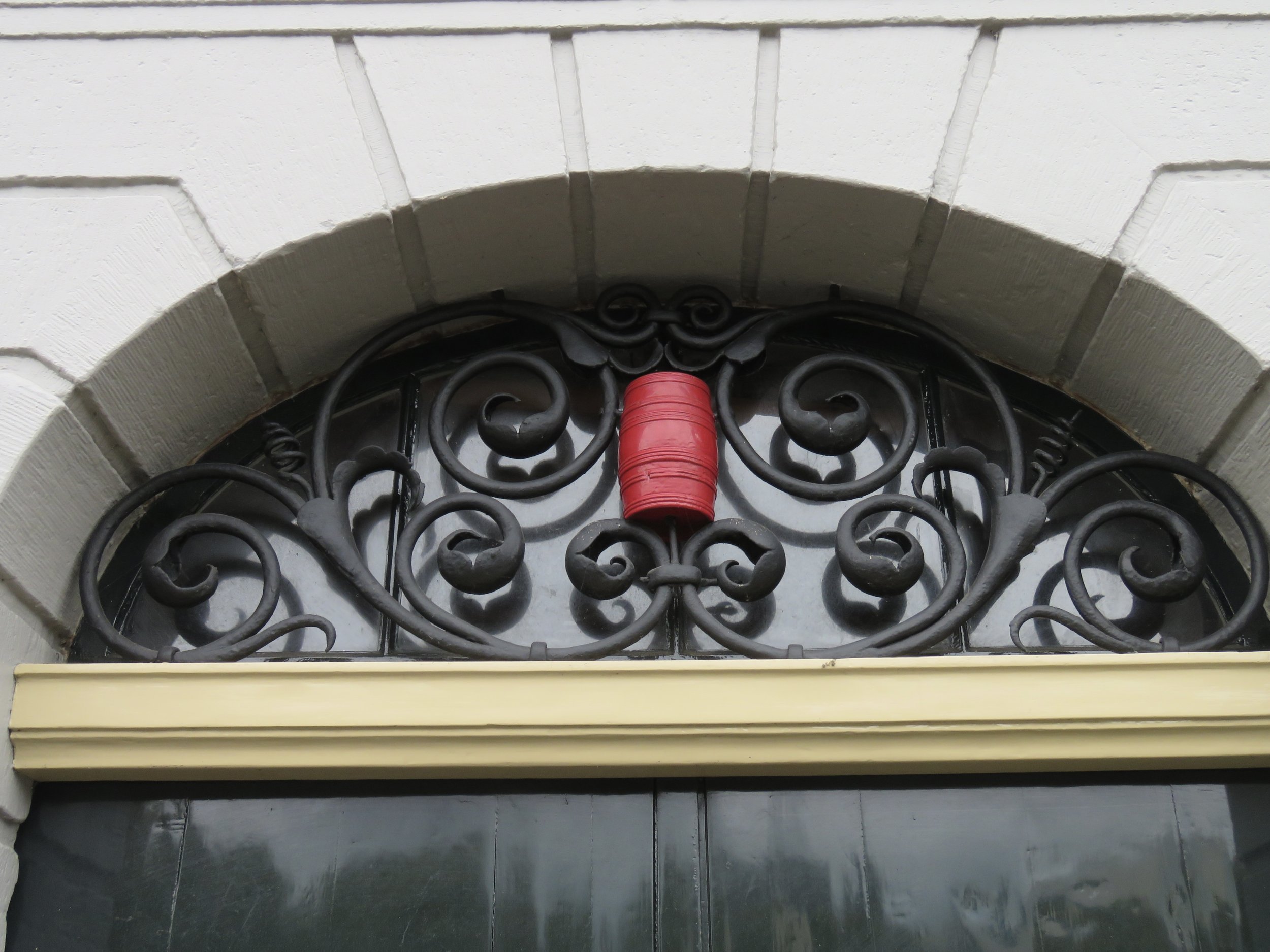When you grow up in a city, everything is ‘normal’ to you when you live there. You tend to take the place for granted. That’s how it was for us - riding our bikes to school, exploring every street and alley, going to the shops, the weekly market. And later exploring beyond our own neighborhood, joining youth groups, taking the train. And, of course, meeting each other in that city!
It wasn’t until later that we came to realize how beautiful and charming that city is. Dordrecht. It’s the oldest city in Holland - which is only two provinces: North and South Holland, not the entire country which is called The Netherlands.
The Three Rivers Meeting Point
Many if not most of the buildings in the old city centre date back to the Middle Ages. And the best thing is that they have been preserved! Some cities level their old centre and rebuild it with modern glass and steel. But Dordrect is a jewel, rivaling if not surpassing the gabled rows of houses and canals of Amsterdam - without the hordes of tourists!
Hotel/Restaurant Villa Augustus
One example of a restored, and repurposed place is Villa Augustus. When I was growing up, the old water tower was a short bike ride away from where I lived. It was build around the 1930’s and stood near the river, almost at the entrance to The Biesbosch - a wetlands, wilderness area of water and now a National Park. As a child I played hide and go seek around the old tower. In the early 2000’s it stood empty and discarded until someone bought it, restored it and turned it into a beautiful, unique hotel with gardens and a very popular restaurant.
When I was a child in middle and early highschool, my favourite pastime was to ride my bike to the inner city and visit a specific museum. I don’t like museums in general but this one was, and is, different. House Van Gijn was built as a wealthy home for a successful business man in 1729. In 1864 Master Van Gijn bought the house on the canal for his family but also for his extensive collection of paintings, ship models, silver, clocks and antique toys. In 1925 his home opened as a public museum. And in the 1960’s I spent much of my free time, after school, in the house. I roamed the rooms imagining that I lived there in the Middle Ages. I pretended to be Cornelia, one of the daughters of the house and tried to imagine what it was like not to have electricity, to cook on wood in the tiled kitchen. To use a chamber pot in the freezing cold bedrooms and to play with the toys in the attic. I knew every painting and every display case by heart. The painting ceilings, the gold tassels on the drapes… In December, once I was older and worked for the Department of Culture in the city, I attended readings and an evening of Medieval cookie decorating. I loved that era. You can still visit the museum today and roam the same rooms!
The Hof.
My office while working for the Department of Culture was in The Hof - dating back to 1275 when it was build as a monastry. Later it served as a court of justice, as city hall and - most famously - as the first seat of goverment when Dordrecht rejected the Spanish occupation and, together with other cities, formed the first general government of Holland.
The skyline of the old city is dominated by the towering Great Church. The Grote Kerk (Big, or Great Church) is a characteristic solid tower built around the year 1100. Today it is a protestant church. The building, with its huge ship, timbers, ornate pews, stained glass windows and ancient grave stones, can be toured. You can also climb the tower. As a child I had no idea of the history but I organized a lot of youth meetings here for Novib, which is now Oxfam. I also helped organize guest speakers Jan and Nico Tinbergen, both Nobel Prize winners.
But perhaps the best thing to do in Dordrecht is walk. Walk the old cobble stone streets. Cross a bridge and see that this city is every bit as beautiful as Venice, with the backs of houses ending right above the water, old wooden doors as testimony to an era when ships brought deliveries by water.
The old streets, lined with leaning houses, are reminders of the booming Middle Ages. They are named for the trades that took place on each street: The Beer Quay, the Wine Quay, the Coopers, even the Nails, the Pigs, the Fish - all still bear the names of what was for sale here.
I liked finding the Writers’ Street!
And everywhere are wonderful coffee shops with tiny patios. As children, both Kees and I visited Visser’s Poffertjes. And on our most recent trip we went back and enjoyed the same buttery, sugary wonderful warm plate of poffertjes - dollar pancakes. The restaurant has been cranking them out since 1932.
You will also come across the ornate, white city hall. It was built in 1383 by Flemisch merchants and has been in use as City Hall since 1544. In 1972 another historic event occurred here: we were married by the Mayor of the city!
One of our favourite new restaurant in the inner city is Het Magazijn, a repurposed building with an inner courtyard, a wonderful oasis to sit and eat.
Our fabulous VRBO stay is right by the scaffoling - walking distance to the historic city centre.
And to stay? We hit the jackpot during our most recent visit. We wanted to visit family across the river in a different city. To get there, you can either drive around via highways and bridges. Or you simply walk onto the ‘water bus’ - a fast ferry that takes you across the river in minutes. BTW this same waterbus will take you from this point straight to Kinderdijk, where the famous windmills are. You can take a bike on the water bus and you can also catch one from here straight to Rotterdam - an amazing city to see for its unique architecture.
Online, we found an apartment (the link show an upstairs apartment for 4 people but we stayed downstairs in an apartment for 2) right on the junction of the three main rivers. When you look straight out of your window, you see the nonstop river traffic: freighters en route to Germany, sailboats out for a day, ferries, river cruise boats… It’s a virtual water highway.
Right outside “our apartment”.
But when you step out of the front door, you are immediately in the historic heart of Dordrecht. There’s a historic footbridge bridge, gabled houses, wrought iron streetlamps and the entire inner city within walking distance.
And right next door is The Great Head: Groot Hoofd. This iconic building was likely constructed in the Middle Ages and an entrance gate to the city from where the three rivers meet. It was restored in 1618! And a few times since then. And on Saturday October 5, 1811 Emperor napoleon visited the low lands by stopping, by boat, by the Groot Hoofd Gate. People were not too keen on his visit since his occupation of the country had caused a decline in their economy, but they came out to this point anyway, to see him. And in the 1970’s Kees often came to this building because, by then, it was the office of his father who worked for the city’s Parks & Recreation department.
As you can see - our roots are interwoven with those of this historic city, one that we highly recommend visiting.
RESOURCES:
https://www.holland.com/global/tourism/discover-the-netherlands/visit-the-cities/dordrecht.htm
https://www.villa-augustus.nl/en/
https://www.huisvangijn.nl/english/
https://www.facebook.com/visserspoffertjes/
https://www.vrbo.com/4131907ha
BOOKS


















